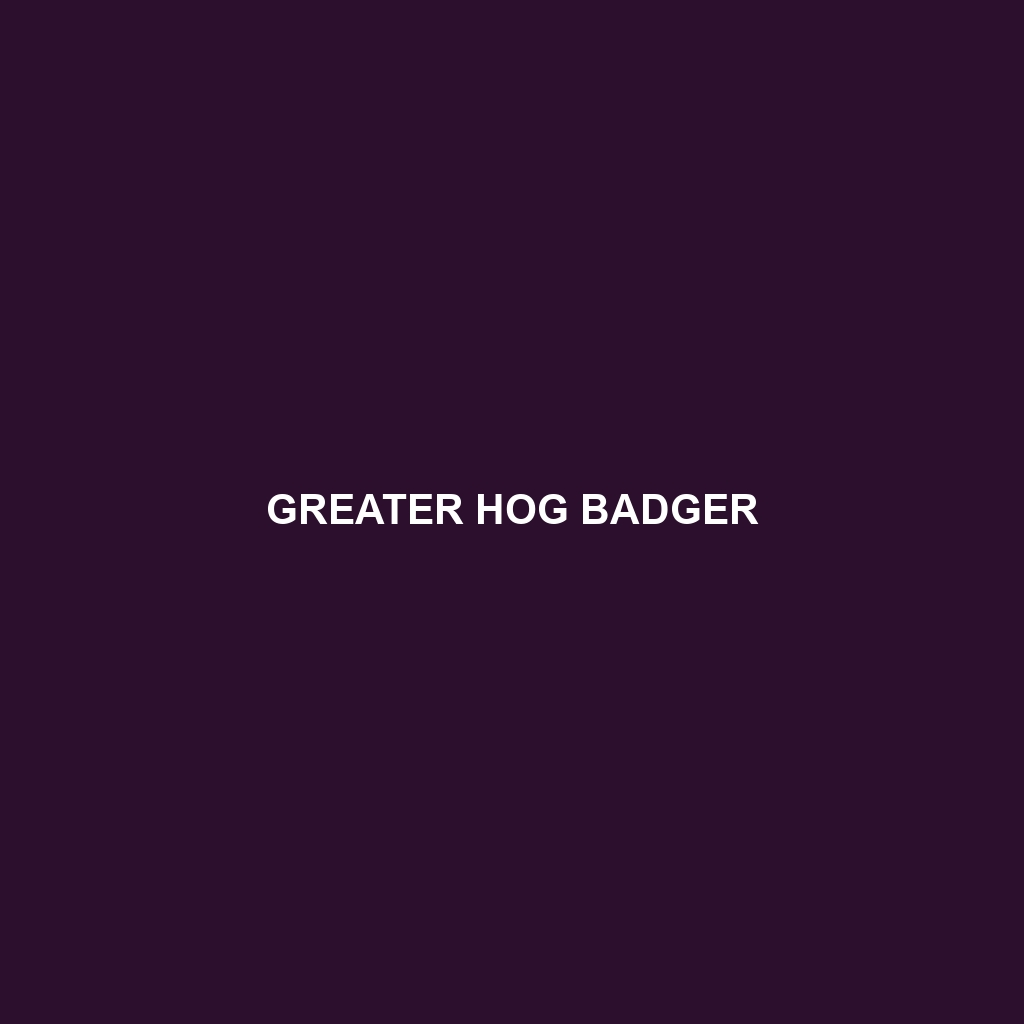Northern Hog Badger: Overview and Insights
Common Name: Northern Hog Badger
Scientific Name: Arctonyx collaris
Habitat
The Northern Hog Badger is predominantly found in the temperate forests and grasslands of Southeast Asia, particularly in countries like India, Nepal, and Bhutan. This species prefers areas with dense undergrowth and abundant cover, allowing it to forage and create burrows. The Northern Hog Badger thrives in regions with rich soil and a moderate climate, showcasing its adaptability to various environments.
Physical Characteristics
The Northern Hog Badger is a robust animal, measuring approximately 60-80 cm in length, with a weight range of 8-14 kg. Its striking physical attributes include a broad, flattened body, short legs, and a distinctive elongated snout. The fur is generally coarse and features a combination of grayish-brown coloration, with lighter underparts. One of its most notable characteristics is the white stripes that run along its face and the black marks on its eyes, which enhance its unique appearance.
Behavior
Northern Hog Badgers are primarily nocturnal creatures, exhibiting a variety of behaviors that make them fascinating to observe. They are known for their curiously social nature, often engaging in playful interactions with each other. These badgers are skilled diggers, using their strong claws to burrow into the ground while searching for insects and roots. Their vocalizations include growls and snorts, which serve as communication during mating seasons or territorial disputes.
Diet
The diet of the Northern Hog Badger is omnivorous, consisting mainly of insects, small mammals, fruits, and roots. Their foraging behavior is quite diverse; they use their sensitive snouts to uncover subterranean food sources. This adaptability in feeding habits not only helps them secure necessary nutrients but also poses them as important pest controllers within their habitats.
Reproduction
Northern Hog Badgers have a breeding season that typically occurs in late spring or early summer. After a gestation period of about 60 to 90 days, females give birth to litters of 2 to 4 young. These offspring are born blind and helpless but begin to open their eyes around two weeks post-birth. Parental care is significant, with mothers taking active roles in nurturing and teaching their young skills necessary for survival.
Conservation Status
The current conservation status of the Northern Hog Badger is listed as “Least Concern” by the International Union for Conservation of Nature (IUCN). However, localized threats such as habitat loss and hunting pose risks to specific populations, contributing to their classification as vulnerable in certain regions. Conservation efforts aim to ensure the protection of their natural habitats and mitigate these threats.
Interesting Facts
– The Northern Hog Badger’s unique name derives from its habit of burrowing and feeding on hog-like insects.
– Unlike many other badger species, the Northern Hog Badger is known for its incredible climbing abilities, allowing it to escape predators or seek food high up in trees.
– These badgers can live for up to 14 years in the wild, showcasing resilience in their environments.
Role in Ecosystem
In their ecosystems, Northern Hog Badgers play a crucial role as both predators and prey. They help control insect populations, influencing the dynamics of their habitats, and serve as a food source for larger carnivores. Their burrowing activities also aerate the soil, promoting healthier plant growth and contributing to the overall biodiversity of their environments.
